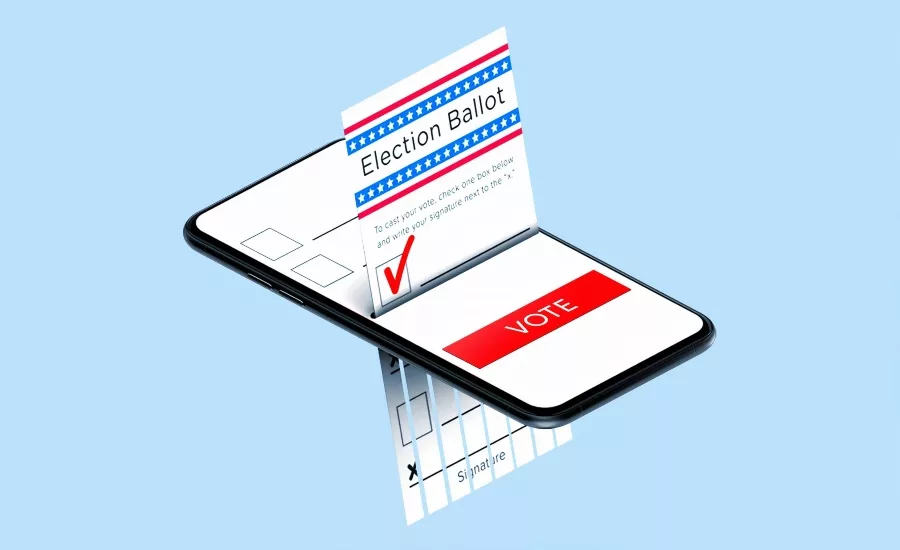It’s time to modernize the voting process

We live in a digital age, yet voting remains woefully outdated. The nation’s recent experience holding a presidential election during a pandemic highlights how important it is to modernize the voting process. The benefits of transitioning to online voting are numerous, including easier access as voters would no longer be required to wait in long lines and greater efficiency as votes would be tabulated electronically. As a recent article in Foreign Policy put it, “At a time when many organizations are going through a digital transformation, it’s time for the United States itself to join in.”
As we consider how best to modernize the election process it’s imperative that we not overlook the inherent security concerns. Elections are a prime target for hackers for a variety of purposes--ranging from individual entities to sophisticated, state sponsored actors. That’s why it’s essential that the security community be included in all efforts to transform the election process. Only when technology providers and all levels of government collaborate to avail of the latest technologies can we effectively transform the voting process and, in so doing, further protect democracy.
Before we can usher elections into the modern age, however, there are a number of challenges that must be overcome. Among them:
- Fragmented environments. By the Constitution itself, the power involved in controlling processes is typically pushed down from the federal government to individual states—and often then to the municipal level. This framework functions well for a variety of initiatives and ensures that programs and services align to the needs of local populations. However, when it comes to unifying processes and driving modernization efforts, this distributed approach comes up short. After all, you’d hardly expect a small municipality to spearhead a digital initiative with federal implications. Working as a collective group, government representatives and the technology community must address this unique challenge, and find a way to implement digital transformation at a macro level while also encouraging the flexibility needed at the state and local level.
It’s difficult enough for a typical corporation to go through a digital transformation exercise; the right mix of skills, funding and agility is required to do it effectively. The former are generally in short supply in the government sector, and agility is virtually impossible in such a fragmented environment. This is an area in which solution providers and other technology organizations could assist. The federal government is already working with numerous solution providers and integrators on digital transformation initiatives. Why not get creative and launch a competition that rewards joint collaborations and encourages these vendors to innovate in the pursuit of modernizing the election process?
- Resource constraints. As mentioned above, driving a large-scale modernization effort traditionally requires significant budget and resources, two things always in short supply in government. Recent innovations in the form of open source and blockchain could help both federal and local governments overcome these obstacles, however. Blockchain addresses many of the criteria essential to a fair and transparent election—accessibility, authentication and security. In theory, were blockchain in use during the 2020 presidential election, anyone from either campaign could check the vote count and audit anything that appeared suspicious. Of course, the industry is not quite mature enough for widespread adoption of a blockchain, though it has been used in regional elections in other countries. But the potential is certainly there, and with federal backing and partnerships throughout the technology community the U.S. could take a blockchain-based system from possibility to reality by the 2026 midterms.
- Diverse population. The government has a very large and extremely diverse user base. The 2020 presidential election saw voters turn out in record numbers, comprising the Greatest Generation through to Generation Z. Just think about the vastly different levels of technology savvy, number of devices and comfort level interacting with digital technologies that exist amongst these demographics. To truly digitize the election process, government and technology providers must determine how to meet these divergent needs and preferences.
- Secure authentication. Given the critical importance of authenticating individual votes, it’s no surprise that security is a prime consideration. Innovations like biometrics receive significant media and industry buzz, however, they remain an ineffective approach when considering the entire U.S. population. Not every voter has a device that is equipped for facial recognition or other forms of biometric identification. As such, relying on biometrics as a primary means for authentication could be viewed as a form of voter suppression. In addition, modernizing many local municipalities to recognize this form of authentication is also an unrealistic expectation.
For these and other reasons, passwords will remain the primary means of securing votes even as the election process becomes more digitized. To shore up security, governments should focus on strengthening the password layer. People frequently share passwords across multiple online accounts, and this practice is even more pervasive amongst both older and younger demographics who are less attuned to the inherent security vulnerabilities. In light of these factors, part of effectively digitizing the election process involves both screening and monitoring credentials to ensure they are not compromised and opening the door to potential fraud.
The pandemic already made this an unprecedented presidential election, and the events that have unfolded since November 3rd only underscore that 2020 is anything but typical. Emergency mode is never the right time to introduce technology changes. But as the current controversy fades and a new administration is sworn in, effectively transforming the election process should be a priority from day one. In an ideal world, by the 2026 midterms we should see a more digitized approach to voting that addresses the divergent needs of the U.S. population while simultaneously ensuring the security and integrity of every individual vote.
Looking for a reprint of this article?
From high-res PDFs to custom plaques, order your copy today!








